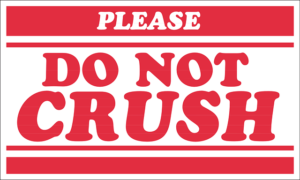 In our work, we often hear stories about employees and their “infractions.” Inevitably, the person telling the story will assign a label to the employee. Words like “difficult,” “untrustworthy,” “high maintenance,” or even “lazy.” Now make no mistake, I get it. Some folks have behavior that rubs us wrong, so in an effort to make sense of it, we need to describe it. It feels like a victimless crime, but that is far from accurate.
In our work, we often hear stories about employees and their “infractions.” Inevitably, the person telling the story will assign a label to the employee. Words like “difficult,” “untrustworthy,” “high maintenance,” or even “lazy.” Now make no mistake, I get it. Some folks have behavior that rubs us wrong, so in an effort to make sense of it, we need to describe it. It feels like a victimless crime, but that is far from accurate.
Let’s begin by taking a look at the problems associated with this behavior:
- The descriptors we use are rarely charitable. And said enough (and from/to the right people) these monikers stick like glue and can limit an employee’s chances of being successful. Who wants to ask a “lazy” person to be part of a team that is working on an important initiative? No one we know, that’s for sure. “Lazy” people aren’t picked for anything special, vital or mission critical.
- These words don’t allow people to change. Once they are used, it’s awfully hard to get past the perception they create. They carry a set of heavy baggage that employees now have to constantly drag around. We have seen employees work themselves silly making change, but because of a mistake made long, long ago, they are still under the weight of condemnation.
- Even the largest organization is shockingly small when we consider the “grapevine” and other informal channels of passing along information. Although we (at Corona Consulting) believe “steam should only vent up,” most people think nothing of sharing their opinions about others. When this happens, it’s no longer just the person making the statement who believes it, but now a damaging narrative is created and furthered with every comment being made.
- If you walk this out, the person making the statement could be seen as a bully. This is especially true when that person is a manager or a member of Human Resources. With those roles comes a certain amount of positional power. They are likely to be asked about who would be great for an opportunity or what they think about someone and their performance, etc. When one has positional power, their words carry more weight and people tend to accept them as the truth.
Now it’s possible you are convicted that this behavior isn’t as harmless as previously believed, but maybe you don’t know what could be done instead.
- When there is a problem with an employee, provide adjusting feedback and coaching. People cannot fix what they do not know about. Make it clear, actionable and do it as soon as the issue occurs. Do not wait. Do not ruminate or crowdsource additional opinions. Do the work that needs to be done.
- If you need help with providing this feedback and coaching, contact a trusted source who will be discreet and not pile on negative comments or stories.
- Give the employee a chance to change. Follow up and follow through to monitor their progress.
- If you notice change isn’t happening, it may be time to change the conversation and widen it to other implications. Hopefully from your previous efforts you learned if there was a mitigating circumstance, so we can take that off the table. If it’s a matter of someone not taking this seriously, explain how it can impact their career and how others see them. Don’t let them minimize the issue or give vague, seemingly hopeful rhetoric, “I just need to…” This kind of statement may bring a coaching session to an end, but it does not actually solve the problem.
- As they work on making change, so can you. Change your thinking about the person and their behavior. Brain science tells us that with every repetitious thought, we drive ruts further into our minds, until they become the default. Negative thoughts about people don’t need to take permanent residence in our minds.
I once heard a pastor say, “When we complain about people, we feel hopeless. And when we complain about circumstances, we feel helpless.” Labeling employees and their shortcomings reveals we are both, but we don’t have to be. Empower yourself to do the right thing and lighten everyone’s load.